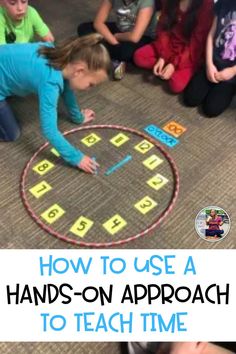Classroom timers are an indispensable tool for teachers looking to manage their time and classroom activities effectively. These simple devices or applications can transform the learning experience, helping to keep students engaged, transitions smooth, and activities on track. Understanding the best ways to use classroom timers and incorporating some timed activities can make a significant difference in day-to-day teaching.
Timers for Classroom Management
One of the primary uses of classroom timers is for managing transitions between activities. Setting a timer for task completion, cleanup, or setup for the next activity keeps students aware of time constraints and reduces downtime. For younger students, visual timers are particularly effective as they provide a clear indication of when it’s time to move on.
Focus on Time-Bound Tasks
Tasks like silent reading, writing exercises, or standardized tests often require a set amount of focus time. Using a timer ensures that students are aware of the limit and encourages them to use their time wisely. It can also help students with time management skills which are essential for their educational journey and beyond.
Game-Based Learning
Incorporating timers into games can make learning both fun and challenging. For instance, setting a timer during a quiz game can ramp up the excitement as students try to answer questions before time runs out. This not only makes the activity enjoyable but also helps students with quick thinking and recall.
Mindfulness and Relaxation
Timers don’t always need to be about rushing and deadlines. They can also be used for mindfulness exercises where students take a few minutes to relax or meditate between intense tasks – bringing a sense of calm to what might be a stressful day.
Our Favorite Timed Classroom Activities
1.Quick Writes: Set a timer for 5 minutes and ask students to write continuously about a given topic or prompt without worrying about grammar or spelling. This is an excellent way for them to organize thoughts quickly and practice fluency in writing.
2.Speed Debates: In small groups, give students a set amount of time – say 3 minutes each – to present their arguments on a topic before switching sides. This teaches them how to form coherent arguments efficiently.
3.Cleanup Races: Turn cleanup into a game by timing classes or groups against each other to tidy up the fastest, reinforcing teamwork and responsibility.
4.Math Drills: Use a timer for quick-fire rounds of arithmetic problems, improving mental math skills under time pressure.
5.Reading Sprints: Particularly effective at encouraging reluctant readers, set up short bursts in which students read as much as they can within a set timeframe.
Utilizing timers effectively in the classroom not only promotes better timeliness and productivity but also introduces an element of fun into daily tasks. Discovering new creative ways to integrate timed activities will keep your teaching fresh and engaging while providing valuable life skills to your students.





